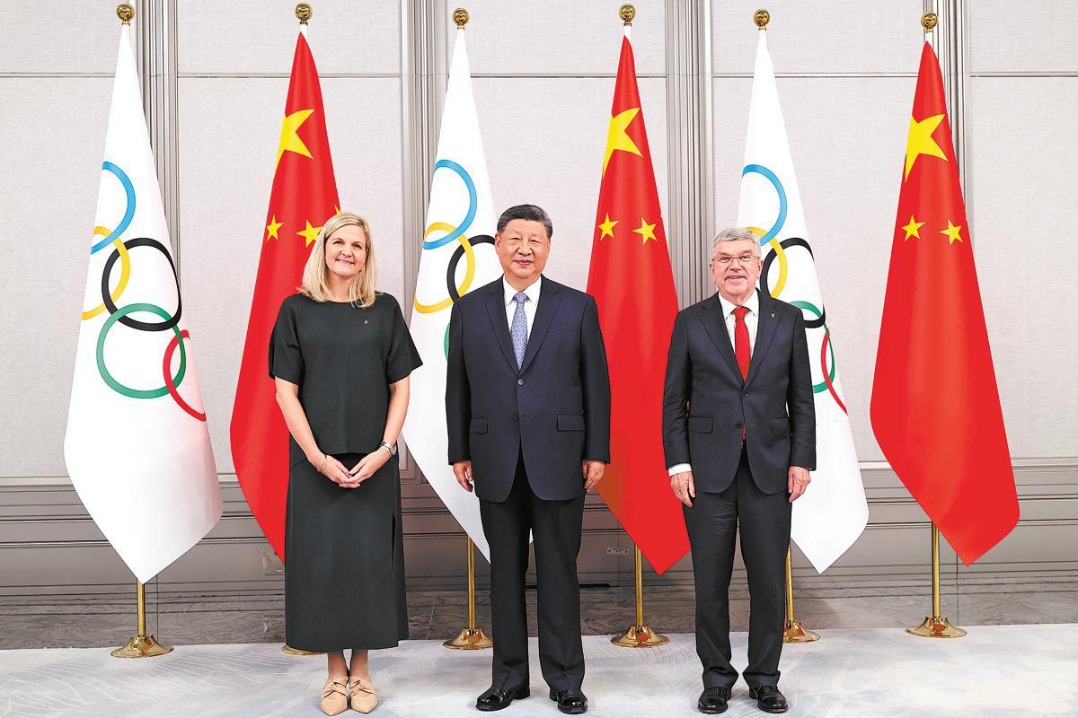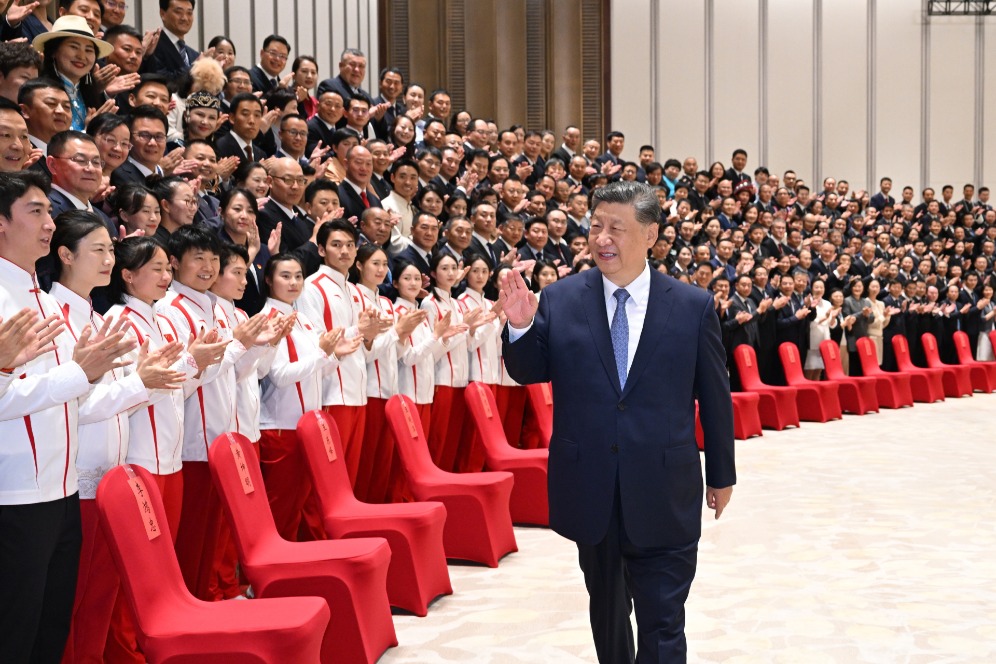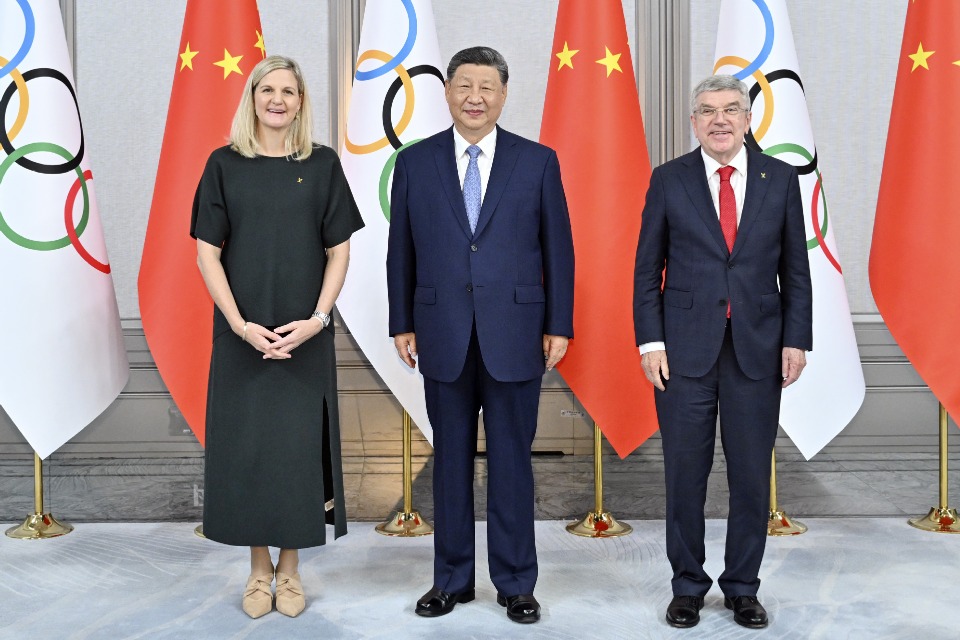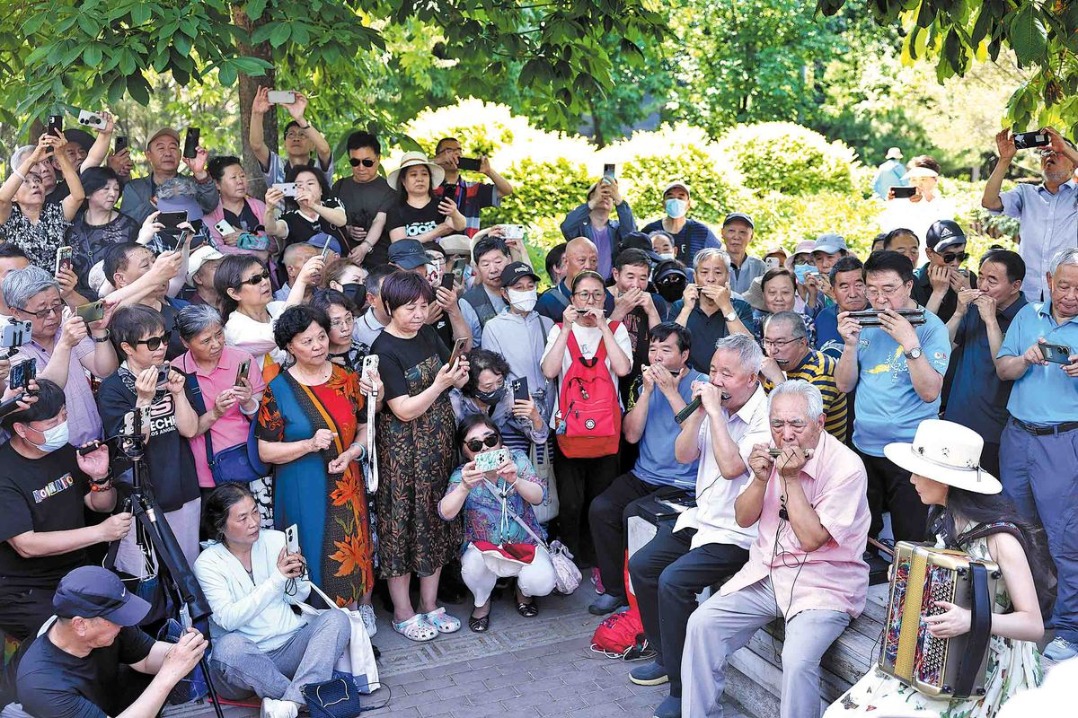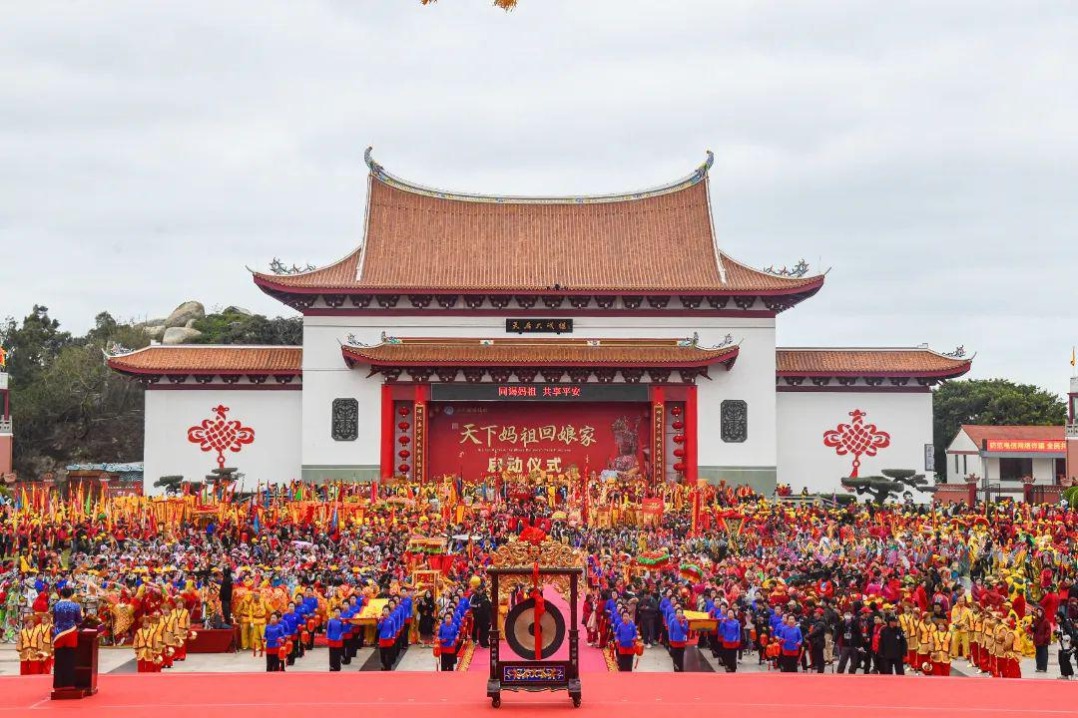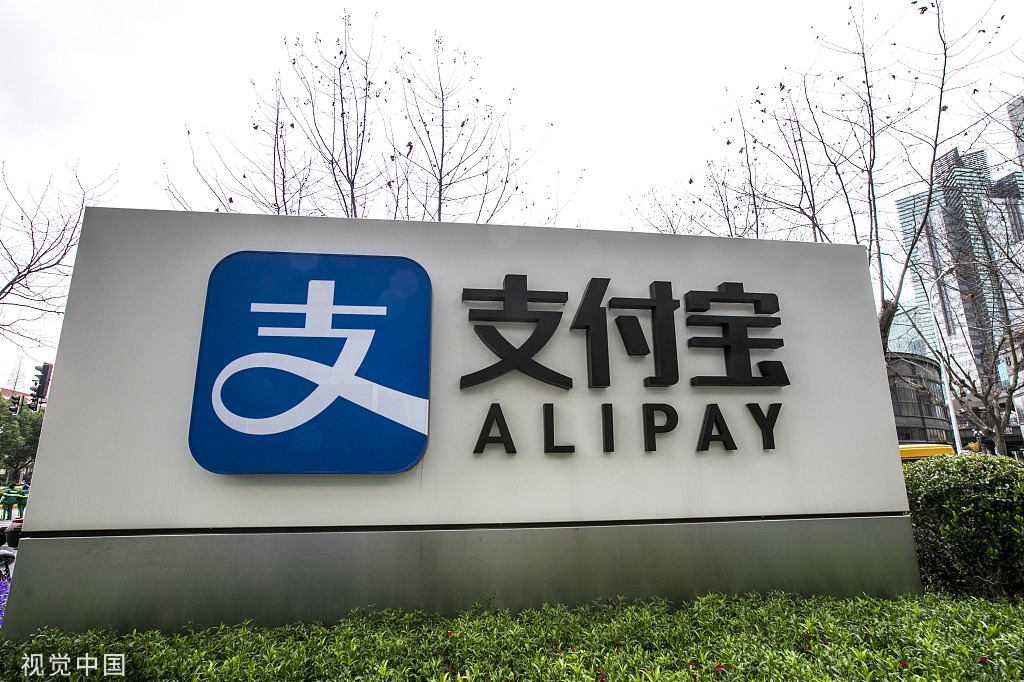Pivotal consensus
China and ASEAN are working together to safeguard peace and stability and achieve common prosperity

Editor's note: The world has undergone many changes and shocks in recent years. Enhanced dialogue between scholars from China and overseas is needed to build mutual understanding on many problems the world faces. For this purpose, the China Watch Institute of China Daily and the National Institute for Global Strategy, Chinese Academy of Social Sciences, jointly present this special column: The Global Strategy Dialogue, in which experts from China and abroad will offer insightful views, analysis and fresh perspectives on long-term strategic issues of global importance.

During the Association of Southeast Asian Nations Foreign Ministers' Meeting and Related Meetings in July 2023, the second reading of the Single Draft Code of Conduct (CoC) in the South China Sea Negotiating Text was completed. This not only marked a major milestone for the CoC, but also served as a powerful response to other countries' attempts to intervene in South China Sea affairs.
The South China Sea issue is a crucial security concern affecting China-ASEAN ties. Over the years, China and the ASEAN countries have well managed their differences and there has not been a large-scale military conflict in the South China Sea.
On top of that, both sides have promoted win-win economic cooperation, making China-ASEAN relations the most dynamic, substantial and mutually beneficial dialogue partnership, setting up a model for East Asian regional cooperation.
How China and ASEAN have handled development and security issues is highly consistent with China's Global Development Initiative and Global Security Initiative, and provides essential experience for advancing these two major initiatives worldwide.
The Declaration on the Conduct of Parties in the South China Sea (DOC), an important political consensus between China and ASEAN countries, set out the basic principles and common norms for handling the South China Sea issue.
The formulation of the DOC started shortly after the establishment of China-ASEAN dialogue relations in the early 1990s. Over the past 30 years, the declaration has gone through three development phases, each lasting approximately a decade. The journey is largely in sync with the development of China-ASEAN regional cooperation. The management of the South China Sea issue and China-ASEAN regional cooperation are interconnected and reinforce each other.
The first phase spanned from 1992 to 2002, covering the formulation and negotiations of the DOC. During this period, the need to maintain regional stability and promote regional cooperation initiated political dialogues on the South China Sea issue, leading to the signing of the declaration. Through consultations, the involved parties enhanced their mutual understanding and trust.
The second phase, from 2003 to 2011, marked the implementation of the DOC. China and the ASEAN countries established multi-level regular dialogue mechanisms and promoted maritime cooperation in the South China Sea. These efforts have effectively maintained stability in the South China Sea and provided security guarantees for enhancing economic cooperation between the two sides.
In the third phase, from 2012 to present, the declaration has been further implemented and the CoC negotiated. Faced with disruptions from the "Indo-Pacific strategy" of the United States, China and ASEAN have prioritized development and continued to handle the South China Sea issue with restraint, thanks to the integration of economic interests and the strengthened strategic mutual trust built up during the second phase. As a result, China and ASEAN have strengthened their cooperation despite their differences, taking a big leap from dialogue relations to strategic partners, finally forging a comprehensive strategic partnership.
Over the past 30 years, China and ASEAN have gained abundant experience in balancing the South China Sea issue and regional economic cooperation.
First, development and cooperation should be prioritized. Since its reform and opening-up, China has focused on economic growth and handled affairs with neighboring countries based on closeness, sincerity, sharing in prosperity, and inclusiveness, bringing harmony, security and prosperity to neighbors. ASEAN, on its part, has been committed to integration and establishing a broader regional trade network.
As a result, development through cooperation has facilitated the convergence of interests between China and ASEAN. The two sides have jointly addressed two financial crises, reached strategic alignment between ASEAN's development agenda and China's Belt and Road Initiative, working together to transform the Asia-Pacific region into a new growth engine for the world economy.
Second, disputes should be resolved in peaceful ways and peace should be promoted through cooperation. Based on fundamental guidelines such as the UN Charter, the UN Convention on the Law of the Sea, the Treaty of Amity and Cooperation in Southeast Asia, as well as the five principles of peaceful coexistence, China and ASEAN have effectively implemented the DOC, worked toward formulating the CoC, and carried out pragmatic maritime cooperation. All of these practices reflect the new security concept underpinned by cooperation, mutual benefits and sustainability.
Lastly, the "East Asian way" and the "dual-track approach" are regional experiences jointly crafted by China and ASEAN. The "East Asian way" emphasizes respect for diversity and differences, gradual progress and seeking consensus through consultation, which has been fully reflected in the process of formulating the DOC.
Widely applied throughout China-ASEAN dialogues, the dual-track approach refers to leveraging the bilateral relations between China and individual ASEAN countries, as well as the China-ASEAN collective dialogues. To some extent, this approach has served as a "buffer "and "pressure relief valve" in managing maritime frictions between individual countries and China.
As the US launched its all-around strategic competition against China, it triggered adjustments in regional and global strategic relations and disputes over the regional order. China supports ASEAN's central role in the regional security architecture and is willing to form strategic alignment with the ASEAN Outlook on the "Indo-Pacific", through the paths outlined in the Global Development, Security and Civilization Initiatives.
Going forward, China should promote the Global Development Initiative to achieve sustainable development in the South China Sea. This includes exploring new drivers of economic growth for all parties, promoting cooperation in science and technology innovation, and seeking new ideas and pathways for governance in the South China Sea. In particular, there should be a focus on studying the marine low-carbon economy, using new technologies to strengthen the protection and development of the marine environment, and seeking win-win cooperation with ASEAN countries in marine resources.
At the same time, China should implement the Global Security Initiative to maintain peace and stability in the South China Sea. The core of the initiative is the principles of the new security concept. Among them, common security advocates respecting the legitimate security concerns of all countries, and sustainable security reflects China's approach of promoting security through development. These principles not only summarize the existing practices of China and ASEAN in maintaining stability in the South China Sea, but also provide guidelines for future security cooperation in the region.
In the future, China and ASEAN need to better coordinate development and security. By implementing the Global Development Initiative, the two sides will fuel cooperation and innovation to provide the impetus for the sustainable security of the South China Sea. By driving the Global Security Initiative, differences will be managed and security guarantees will be provided to ensure the sustainable development of the South China Sea and economic cooperation between China and ASEAN.

 .
.
The author is a researcher at the National Institute of International Strategy at the Chinese Academy of Social Sciences. The author contributed this article to China Watch, a think tank powered by China Daily.
Contact the editor at editor@chinawatch.cn.

















